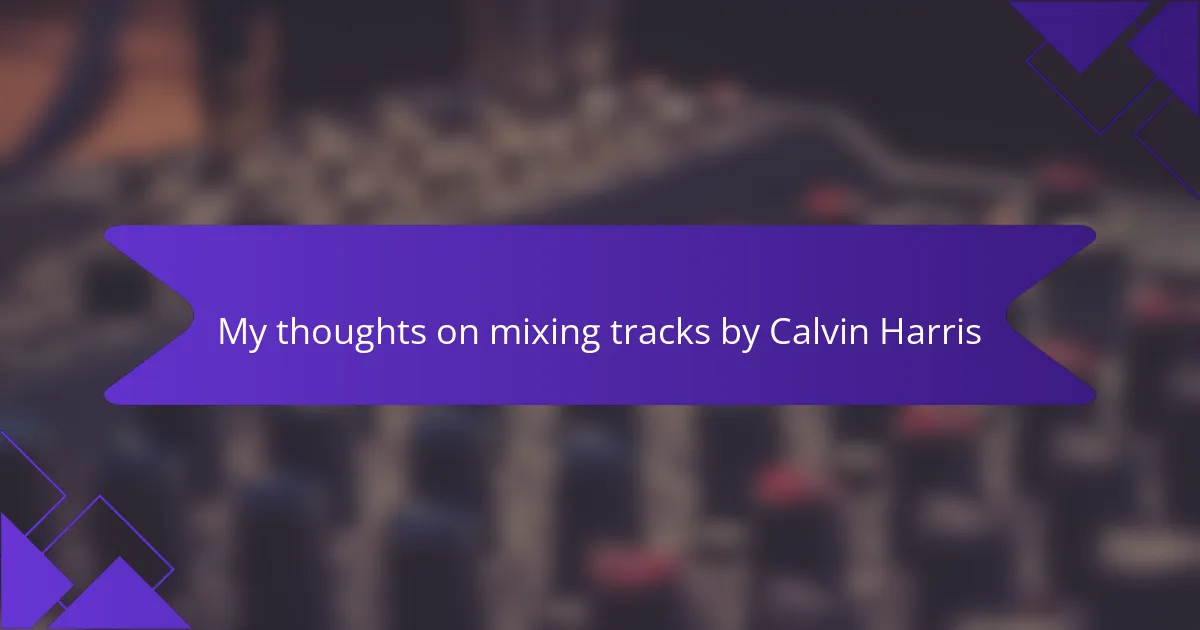Key takeaways
- DJ entertainment combines creativity, music, and technology, with a focus on both traditional DJing and electronic music production.
- Ableton Live is highlighted for its user-friendly interface and versatile features such as Session View and built-in instruments, enhancing the creative process.
- Beat making begins with understanding rhythm and sound selection, encouraging experimentation and layering to enrich compositions.
- Enhancing beats involves small details, like layering sounds and adjusting groove settings, to create depth and maintain listener engagement.
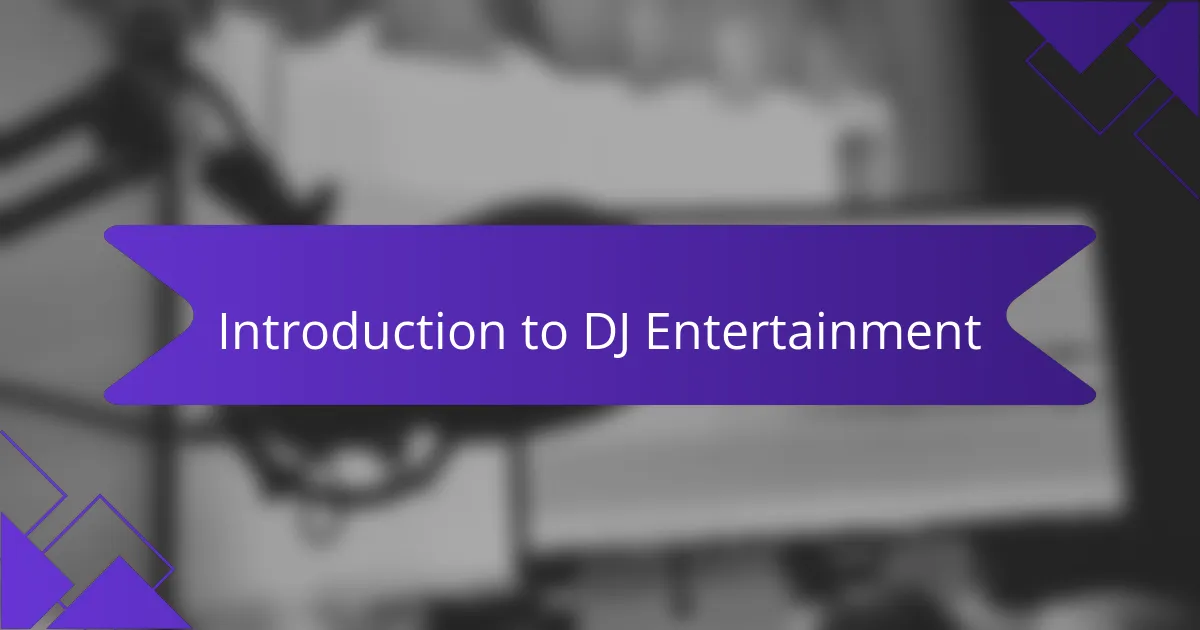
Introduction to DJ entertainment
DJ entertainment is a vibrant and dynamic field that blends creativity, music, and technology. My journey into DJing began when I first experienced the electrifying atmosphere at a local nightclub. The way DJs transformed the energy of the audience with just a few beats captivated me, and I knew I wanted to be part of that magic.
As I explored the world of DJing, I realized that creating beats using software like Ableton Live is a powerful avenue for expressing my creativity. It allows me to craft unique sounds and rhythms that resonate with my personal style while connecting with others on the dance floor.
Here’s a quick comparison of traditional DJing versus producing electronic music using software like Ableton Live:
| Aspect | Traditional DJing | Producing with Ableton Live |
|---|---|---|
| Setup | Turntables and mixer | Computer and software |
| Skill Focus | Mixing tracks | Creating original beats |
| Music Control | Limited to selected tracks | Unlimited creative possibilities |
| Performance Style | Live remixing of existing songs | Live creation or performance of original music |
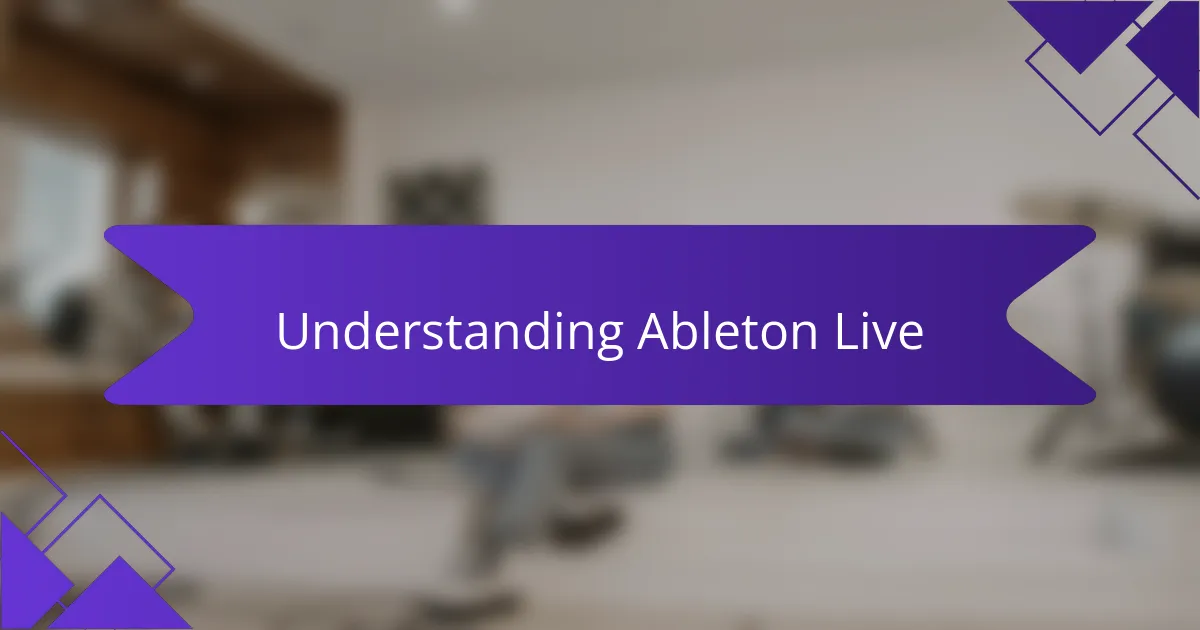
Understanding Ableton Live
Ableton Live is an incredible digital audio workstation that I quickly fell in love with during my journey into electronic music production. From the moment I opened it, I was captivated by its intuitive interface and the ability to manipulate audio in real time. I remember the first time I dragged a loop into the session view; it felt like opening a treasure chest filled with endless possibilities.
What sets Ableton Live apart for me is its versatility. It doesn’t just cater to studio production; it’s designed for live performances, making it a unique tool in the beat-making landscape. Here are some key features that make Ableton Live stand out:
- Session View: Perfect for improvisation and live performance, allowing you to trigger clips and loops easily.
- Audio and MIDI Tracks: Facilitates seamless integration, letting you edit both audio samples and MIDI patterns effortlessly.
- Built-in Instruments and Effects: A rich library of synths and effects that enhance creativity.
- Warping Capabilities: Enables time stretching and pitch shifting without compromising sound quality, crucial for electronic beats.
- User-Friendly Interface: Designed to be intuitive, which significantly shortens the learning curve for newcomers like myself.
These aspects truly resonate with my experience, making each beat I create feel fresh and exciting.
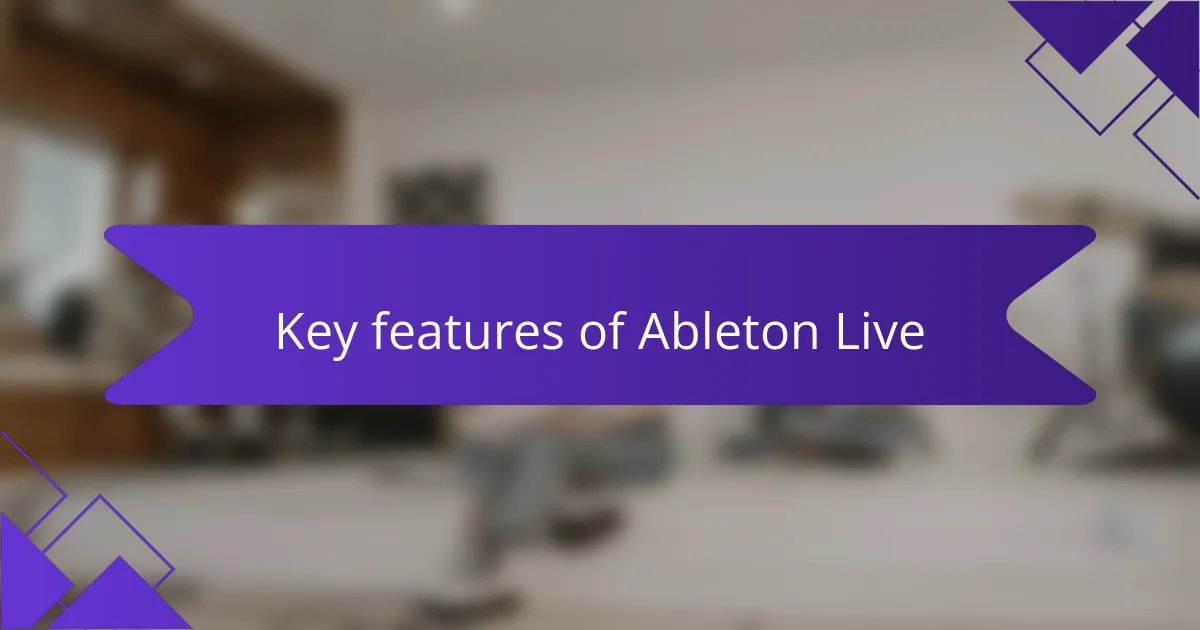
Key features of Ableton Live
Ableton Live stands out to me for its flexibility and intuitive interface, which makes it perfect for both beginners and seasoned producers. I remember the first time I dove into the software; the Session View allowed me to experiment with loops and layers—something that instantly fueled my creativity. It’s like having a canvas where you can paint with sound, and that feeling is truly exhilarating.
One of the key features I appreciate is the range of built-in instruments and effects. They not only help me shape my sound but also provide inspiration when I’m facing a creative block. Below are some highlights of what makes Ableton Live a powerful tool for electronic music production:
- Session View: Allows for fluid improvisation and real-time arrangement.
- Arranger View: Provides a linear timeline to structure your tracks methodically.
- Audio and MIDI Effects: A collection of tools to manipulate sound creatively.
- Max for Live: Offers endless possibilities with user-created devices, enhancing functionality.
- Clip Launching: Lets you trigger clips effortlessly, making live performances a breeze.
Using these features, I’ve grown as an artist, and they give me the freedom to explore new musical territories continually.

Basics of beat making
Creating beats is a foundational skill in electronic music, and it starts with understanding rhythm and structure. When I first began making beats, I was fascinated by how different sounds could come together to form something cohesive and engaging. It’s like constructing a building; every element, from the kick drum to the hi-hats, plays a crucial role in the final sound.
In my experience, beginning with a simple loop can really help set the tone for your track. I often start by programming a basic drum pattern, which gives me a rhythmic backbone to build on. This primary beat acts as a guide, allowing me to layer melodies and sounds on top. It’s exhilarating to hear a simple beat evolve into a fuller composition. Have you ever felt that spark when a beat you’ve been crafting suddenly clicks?
Don’t underestimate the importance of sound selection either! The right kick drum can dictate the energy of a track. I vividly remember spending hours experimenting with different samples until I found one that felt just right. It taught me that patience is just as vital as creativity in beat making. So, as you embark on your own beat-making journey, give yourself the freedom to experiment and explore. Who knows what unique sound you might discover?

Steps to create your first beat
To create your first beat, I recommend starting with a simple drum pattern. I remember my first attempt; I set the tempo around 120 BPM and programmed a basic kick drum on the downbeats. This fundamental rhythm provides a sturdy foundation that you can build upon. Have you ever felt that rush when you finally got the groove just right? It’s one of the most satisfying moments in music production.
Once you have that initial groove, layering is key. Try adding hi-hats and a snare to complement your kick. When I first experimented with layering, I coaxed my sounds into a conversation, each element playing off each other uniquely. It’s fascinating to see how a few simple layers can transform your track, pulling the listener into a rich soundscape. Remember, sometimes less is more.
Finally, explore the sounds that resonate with you. I spent hours just browsing through samples, trying to find the right one that sparked joy or inspiration. It’s all about personal expression, and the perfect sound can elevate your beat to new heights. What sounds speak to you? Trust your instincts, and don’t be afraid to try unconventional combinations. I’ve often found that those unexpected choices lead to the sweetest musical surprises.
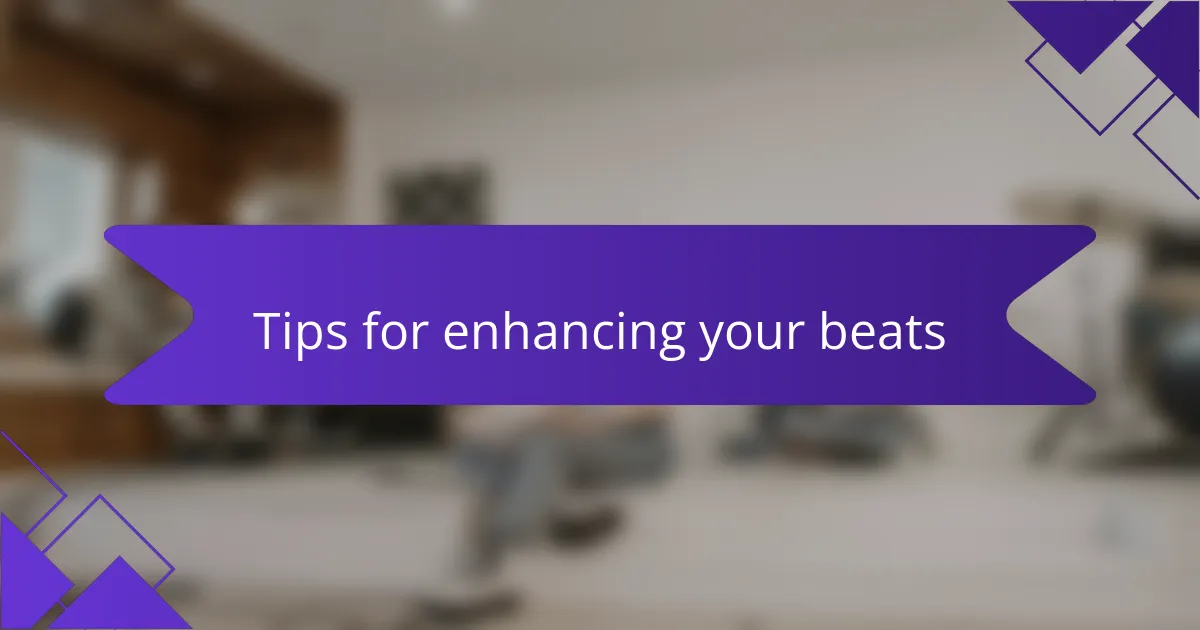
Tips for enhancing your beats
When I first started creating beats in Ableton Live, I quickly realized that the small details could make or break a track. Layering sounds has been one of my go-to techniques. By adding textures, like a subtle atmospheric pad beneath a driving bassline, I can create depth and richness that really pulls listeners in. It’s almost like painting a picture; each layer adds to the overall vibe.
Another key aspect I’ve learned is the importance of groove and swing. I remember the first time I adjusted the swing settings on my drum rack; it transformed my rigid beat into something that moved and breathed. That tiny change made my music feel alive! Here are some tips to enhance your beats:
- Experiment with layering different instruments and sounds for richness.
- Use swing settings to add groove and make your beats more dynamic.
- Incorporate unexpected sounds or samples to surprise the listener.
- Play around with effects like reverb and delay to create depth.
- Always trust your ear — if something feels off, don’t hesitate to tweak it.

